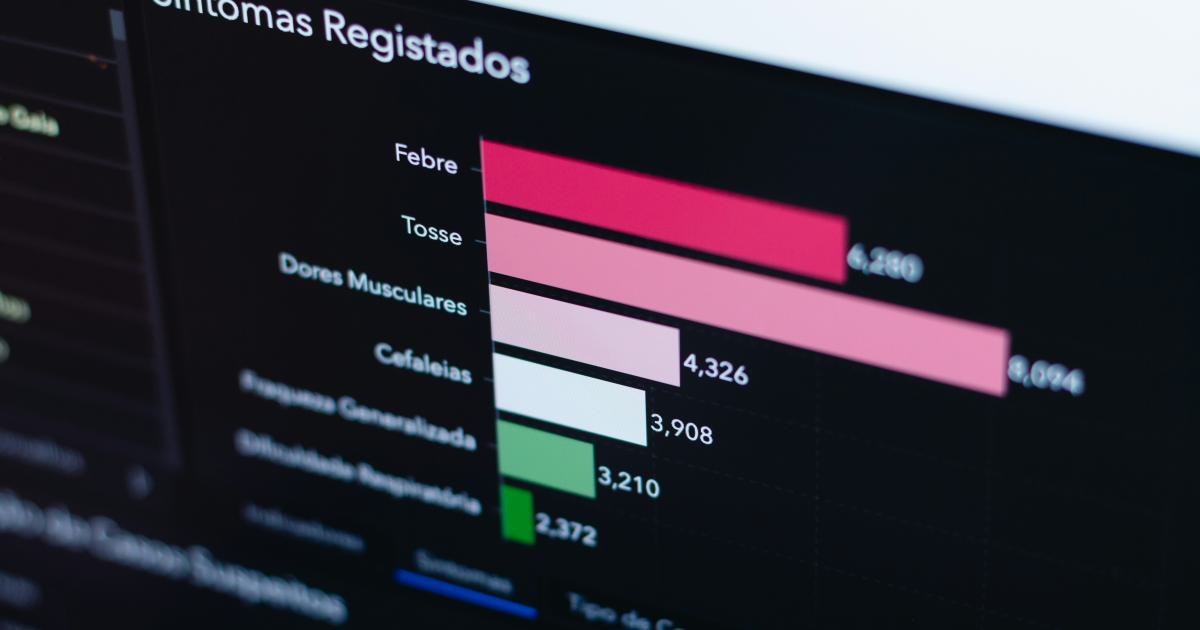Unlock 8 Lucrative Fed Rate Decision Event Analysis Techniques

The world of finance is perpetually evolving with intricate indicators that determine market behavior and economy shifts. Among these, the fed rate decision event analysis plays a pivotal role in shaping investor sentiment and guiding economic forecasts. In this article, we will explore eight lucrative techniques designed to help professionals and enthusiasts conduct comprehensive fed rate decision event analysis. Whether you are a seasoned analyst or a newcomer to Central Banking news, these methodologies will provide you with actionable insights, detailed explanations, and real-world case studies to improve your strategy.
Understanding the impact of the federal rate decision is essential. The decision not only affects the cost of borrowing but also influences consumer spending, investment strategies, and even global economic trends. By mastering these eight techniques, you can anticipate market reactions, optimize your portfolios, and navigate uncertainties with confidence. Let’s delve deeper into these analytical strategies that integrate historical data, macroeconomic correlations, sentiment analytics, options pricing, policy review, and even emerging machine learning techniques.

1. Analyzing Historical Trends and Data Patterns
One of the cornerstones of fed rate decision event analysis lies in understanding historical trends. By studying past decisions and correlating them with subsequent market behaviors, analysts can develop predictive models that hint at probable outcomes during future events.
Understanding Historical Data
Historical data provides a wealth of information about how markets have reacted after previous fed rate announcements. Analysts typically study key metrics including interest rate adjustments, subsequent market movements, and volatility trends. Historical trends not only reveal patterns but also help highlight anomalies that might have been influenced by external factors such as geopolitical events or unexpected economic shocks.
For instance, in the early 2000s, despite several rate hikes, certain sectors like banking and technology exhibited resilience. Analysts used these observations to forecast similar trends, even if subtle shifts in the economic landscape suggested potential divergence. Similarly, during the 2008 financial crisis, historical data became crucial in understanding unprecedented market responses.
Building Data Models
Creating robust data models is essential. Analysts use tools like regression analysis, time series forecasting, and Monte Carlo simulations to predict market behavior. These models factor in a multitude of variables such as:
- Cumulative changes in interest rates over time.
- Market volume fluctuations following prior announcements.
- Global economic indicators that indirectly affect domestic trends.
A case in point is the incorporation of weather-related data in agricultural commodity forecasts. Although non-traditional, the combination of historical and environmental data helped traders anticipate market movements more accurately during a rate decision that influenced agricultural loans.
Actionable Steps
Gather historical data on fed rate changes, market indices, and related economic variables.
Identify recurring trends, outliers, and periods of market anomalies.
Utilize statistical software or programming languages like Python and R to build and test your predictive models.
Continuously update models with new data to ensure accuracy over time.
By employing a well-rounded historical analysis technique, you can gain a solid grounding in how past decisions shape present market sentiments, thereby equipping yourself with insights beneficial for forecasting future trends.
2. Integrating Macroeconomic Indicator Correlation
The US Federal Reserve does not operate in a vacuum. Its decisions are not only influenced by domestic economic conditions but also by global trends. Integrating macroeconomic indicator correlation into your analysis can provide a more complete picture.
What Are Macroeconomic Indicators?
Macroeconomic indicators include a wide array of data points such as GDP growth rates, employment figures, inflation measures, and consumer confidence indices. These data points collectively form the basis on which the Fed makes its decisions. For example, an unexpected rise in inflation might push the Fed to increase interest rates, thereby influencing market sentiment.
Correlating Indicators with Fed Decisions
Analyzing the relationship between these indicators and the fed rate decision event analysis can reveal patterns that forecast market behavior. Techniques include:
- Correlation Matrices: These allow analysts to understand how strongly different economic indicators are associated with each other. A correlation matrix can highlight whether high inflation invariably coincides with rate hikes.
- Lead-Lag Analysis: Identifying which indicators lead or lag behind rate changes can be a game-changer. For instance, a lag in consumer spending might indicate that a rate decision is already priced into the market.
- Regression Analysis: By regressing key indicators against historical rate decisions, analysts can determine the impact magnitude of each variable, thereby modeling potential future responses.
Real-World Application
Consider the response of the market during the post-recession period of 2008-2010. Analysts noted that the recovery in employment statistics typically lagged behind rate cuts. Meanwhile, increasing commodity prices often anticipated monetary tightening to counter inflationary pressures. By aligning these indicators, money managers were better positioned to capture emerging trends.
Actionable Steps
Collect reliable economic data from sources such as the Bureau of Economic Analysis (BEA), the Federal Reserve, and international agencies.
Use software tools to generate correlation matrices and perform lead-lag assessments.
Regularly review economic forecasts from reputable institutions to keep your analysis current.
Create visual data dashboards to monitor key indicators in real time.
Utilizing macroeconomic indicator correlation in your fed rate decision event analysis ensures that your predictions are well-rounded and internationally relevant. This approach provides a 360-degree view of influences that extend beyond the US borders.
3. Deploying Sentiment Analysis for Media and Social Media
With the rise of digital communication, sentiment analysis has become a powerful tool in understanding public and investor perceptions. By quantifying the tone in media coverage, press releases, and social media discussions, analysts can gauge market sentiment ahead of critical federal decisions.
Utilizing Natural Language Processing (NLP)
Recent advances in NLP have enabled analysts to process vast amounts of text data quickly. Using algorithms to parse news articles, tweets, and blog posts, you can quantify sentiment through positive, neutral, or negative indicators. When applied to fed rate decision event analysis, this technique reveals how market sentiment shifts in the days leading up to the release of important economic data.
For example, during a period of anticipated rate hikes, sentiment analysis tools might detect prudence and caution in media terminology. In contrast, optimistic language among investors could signal that market participants expect a rate cut. This nuanced understanding helps in making more informed predictions.
Tools and Techniques
Several sentiment analysis tools and APIs are available that integrate with data visualization platforms. Common techniques include:
- Lexicon-Based Analysis: This approach uses predefined lists of words to determine sentiment polarity. Words like “growth,” “boon,” or “recession” are scored based on their positive or negative connotations.
- Machine Learning Approaches: Training algorithms on historical sentiment datasets linked to known market outcomes can further refine predictive capabilities.
- Social Listening Platforms: Tools like Hootsuite or Brandwatch can track keywords and sentiment trends over time, giving analysts a comprehensive view of market mood.
Real-World Example
Consider the run-up to a major Fed meeting in 2019. Analysts deployed sentiment analysis on diverse media sources and found a marked increase in negative sentiment, flagged by the presence of cautionary language regarding inflation risks. This sentiment preceded a more aggressive rate hike than what many had expected, underscoring the value of sentiment analysis in fed rate decision event analysis.
Actionable Steps
Choose sentiment analysis tools that best fit your data sources.
Monitor diverse channels – from reputable financial news sites to social media platforms.
Regularly recalibrate your algorithms to account for emerging slang, abbreviations, or regional differences in language.
Integrate sentiment scores with other quantitative data for comprehensive forecasting.
The application of sentiment analysis enables an additional layer of insight, functioning as an early warning system that complements traditional quantitative models.

4. Leveraging Options Pricing and Futures Analysis
Options and futures markets offer another window into the expectations surrounding federal rate decisions. These derivatives markets aggregate the collective wisdom of traders and reflect market sentiment in their pricing.
Understanding Derivative Instruments
Options and futures are financial contracts that derive value from an underlying asset. In the context of fed rate decision event analysis, these instruments serve as indicators of market expectations. For instance, an increase in options premiums around interest rate-sensitive assets might indicate that traders are hedging against volatility.
Utilizing Options Pricing Models
Popular models such as the Black-Scholes or the Binomial options pricing model can provide insights into the expected volatility and risk premium associated with rate changes. These models factor in variables such as time decay, underlying asset volatility, and prevailing interest rates, offering a nuanced perspective on expected market behavior.
Futures Contracts as Predictive Tools
Futures contracts, on the other hand, are often used to speculate on the direction of interest rates and other economic indicators. The pricing of treasury futures, for instance, has been shown to correlate strongly with rate decisions. By analyzing the pricing trends and volumes in these markets, analysts can deduce the probable direction – and magnitude – of potential rate changes.
Case Study and Implementation
During the early 2010s, futures markets hinted at a tightening cycle before it was widely reported. Analysts who carefully studied these markets were able to reposition their portfolios accordingly, mitigating risk and capitalizing on emerging trends.
Actionable Steps
Monitor pricing trends in the options and futures markets using reliable platforms.
Employ models like Black-Scholes to assess implied volatility.
Cross-reference derivative pricing trends with economic indicators and sentiment analysis to confirm or nuance your predictions.
Develop risk management strategies based on potential market swings indicated by these instruments.
By integrating options pricing and futures analysis into your fed rate decision event analysis, you create a multi-dimensional perspective that blends quantitative market behavior with underlying economic trends.
5. Scrutinizing Central Bank Communications and Minutes
Central bank communications, including press conferences, official statements, and meeting minutes, are invaluable for understanding the rationale behind rate decisions. These narratives often provide insights into the central bank’s outlook, policy rationale, and anticipated economic challenges.
The Importance of Transparency
Recent trends in monetary policy emphasize transparency. The Fed’s detailed meeting minutes and press releases offer clues about potential shifts in strategy. Analysts often pore over key phrases and tone indicators that hint at underlying concerns such as inflation persistence, employment anomalies, or geopolitical risks.
Dissecting the Language
A technique that has gained traction is the linguistic analysis of central bank communications. By examining the frequency of certain words or phrases—such as “gradual,” “data-dependent,” or “cautious”—analysts can infer future mandates. For instance, a heavy emphasis on “data dependency” might suggest that future moves will be reserved until more comprehensive economic data becomes available.
Case Example
In the lead-up to a major decision in 2017, the Fed’s minutes contained nuanced shifts in language that hinted at an impending tightening cycle. Analysts who had observed these changes were not only timely in their rebalancing but also improved their overall market predictions for the subsequent quarter.
Actionable Steps
Regularly review official Fed communications, utilizing both textual and sentiment analysis.
Create a filter to highlight changes in language over successive releases.
Compare communications with actual market outcomes to gauge if language shifts reliably predict rate changes.
Use qualitative insights to complement your quantitative models, creating a more holistic analysis.
Scrutinizing central bank communications empowers analysts to tune their forecasts based on the Fed’s internal deliberations and public disclosures, enhancing the precision of fed rate decision event analysis.
6. Incorporating Global Economic Trends and International Spillovers
In today’s interconnected economy, the U.S. federal rate decision is influenced by worldwide economic trends. Global economic indicators, geopolitical issues, and international monetary policies all converge to affect domestic rate decisions.
Recognizing Global Interdependence
Economic developments in major economies such as the Eurozone, Japan, and emerging markets can significantly impact U.S. monetary policy. For example, a significant slowdown in Europe can compel the Fed to adjust its policy stance to maintain global stability.
Analysis Techniques
Integrating global economic trends into your analysis involves:
- Monitoring international central bank policies to see if they are aligned or diverging from U.S. policy.
- Analyzing trade data, foreign exchange markets, and international capital flows.
- Comparing the Fed’s responses to similar global economic events in the past to anticipate how international conditions might alter current decision-making.
Practical Example
During the European sovereign debt crisis, the Fed’s decisions were subtly influenced by the need to prevent global credit market disruptions. Analysts who closely monitored global trends were quick to integrate these factors into their models, achieving more accurate predictions of market movements.
Actionable Steps
Gather international economic data from reputable global institutions like the International Monetary Fund (IMF) and the World Bank.
Develop comparative models that simulate the effects of different global scenarios on U.S. monetary policy.
Conduct regular assessments to evaluate how international political events may trigger market volatility.
Use real-time global news feed aggregators to stay updated on international trends.
This global perspective enriches fed rate decision event analysis by ensuring that no external pressure is overlooked, providing a clearer signal on potential rate adjustments influenced by international dynamics.

7. Employing Machine Learning and Predictive Algorithms
Advancements in technology and data processing have opened up new horizons in financial forecasting. Machine learning models, which utilize large datasets and sophisticated algorithms, can provide a competitive edge in fed rate decision event analysis.
Setting Up a Machine Learning Environment
Before you can apply machine learning to your analysis, it is essential to set up an appropriate environment: choose a programming language (Python is widely used), gather historical data, and create a training model. This model will help you predict market responses to rate decisions based on various inputs, including historical trends, macroeconomic indicators, sentiment scores, and derivative pricing.
Machine Learning Techniques
Key techniques that can be applied include:
- Supervised Learning: Use labeled datasets where past fed decisions are tagged with outcomes, allowing the algorithm to learn predictive features.
- Neural Networks: Deep learning models can uncover complex, non-linear relationships across vast datasets, identifying subtle patterns that traditional models might miss.
- Ensemble Methods: Combine predictions from multiple models to increase forecasting accuracy and reduce the margin of error.
Real-World Application
An innovative hedge fund recently integrated a machine learning model into its investment strategy. By continuously training the model on incoming data, the fund was able to adjust its position ahead of unexpected rate decisions, mitigating losses and capitalizing on market movements.
Actionable Steps
Gather comprehensive datasets from multiple sources ensuring diversity in economic, market, and sentiment data.
Build, train, and refine machine learning models with cross-validation techniques to prevent overfitting.
Continuously monitor model performance and feed new data to ensure forecasts remain accurate over time.
Integrate model outputs with existing analytical tools for a more robust risk management strategy.
Machine learning brings a dynamic and adaptive approach to fed rate decision event analysis. The incorporation of predictive algorithms can significantly enhance the reliability of forecasts, which is indispensable in highly volatile market conditions.
8. Simulating Policy Impact Scenarios
Beyond statistical and algorithmic models, scenario simulation offers a practical method to assess potential impacts of future rate decisions. This technique helps analysts understand the breadth of possible outcomes by evaluating "what if" scenarios.
Benefits of Scenario Simulation
Scenario simulation allows you to create diverse economic models that account for different variables. Here, you can simulate:
- A sustained rate hike scenario.
- A rapid reversal in policy stance.
- A standoff scenario in which economic data does not solidify any decision change.
Such simulations provide a range of possible market responses that can be invaluable in strategic planning and risk assessment.
Building Your Simulation Model
To develop an effective simulation model, you should:
Define clear parameters based on historical data.
Include multiple variables such as employment rates, inflation, consumer confidence, and even international risk factors.
Run iterative simulations to see how modifications in one variable affect overall market dynamics.
For example, during a previous low-interest rate environment, simulations that introduced gradual rate hikes showed significant improvements in portfolio performance. This was achieved by carefully rebalancing exposure to interest rate sensitive assets, thereby mitigating risks through diversified investments.
Actionable Steps
Develop multiple scenarios that range from conservative to aggressive policy shifts.
Use spreadsheet models or specialized simulation software to run these scenarios.
Assess each scenario’s outcomes on key market variables and adjust investment strategies accordingly.
Review and refine simulations regularly as new economic data emerges.
Scenario simulation not only provides strategic insights but also builds a proactive mindset, equipping you with the ability to adapt quickly to sudden market changes. This is a cornerstone in modern fed rate decision event analysis.
Recap and Conclusion
In this comprehensive article, we have unlocked eight lucrative techniques for fed rate decision event analysis. Each method—from historical data analysis and macroeconomic indicator correlation to cutting-edge machine learning models and scenario simulations—offers unique insights into market behavior around Fed decisions.
By integrating these diverse strategies into your analytical toolkit, you achieve a more nuanced understanding of both immediate market responses and long-term trends influenced by federal policies. Real-world examples have underscored the practical applications of these techniques, while actionable steps provide a roadmap for immediate implementation. This multipronged approach not only bolsters the accuracy of market predictions but also empowers you to formulate strategies that account for both domestic and global economic factors.
Through a blend of rigorous quantitative analysis, advanced technological tools, and insightful qualitative assessments, the techniques discussed in this article serve as a robust framework for navigating the complexities of modern financial markets. Whether you are enhancing an existing strategy or building a new one from the ground up, these methodologies provide a comprehensive guide to mastering the art and science of fed rate decision event analysis.
As markets continue to evolve and new variables enter the equation, staying updated with the latest data and refining your models will be critical. Remember, the landscape of financial analysis is ever-changing, and the insights derived from these techniques are only as good as your ability to adapt. Leveraging these strategies effectively can transform uncertainties into opportunities, ensuring that you remain well-prepared to capitalize on the market shifts driven by federal rate decisions.
In conclusion, unlocking these eight techniques not only enriches your analytical acumen but also places you at the forefront of modern financial analysis. Embrace these strategies to gain actionable insights, mitigate risks, and ultimately, drive success in an increasingly complex financial environment.

Unlock Your Trading Potential with Edgewonk
Struggling to consistently achieve profitable trades? Edgewonk's cutting-edge analytics empower you to analyze your performance and refine your strategies.
Our advanced trading journal software provides detailed insights, psychological analysis, and personalized recommendations tailored to your unique trading style.
Annika Eriksson
55 posts written




